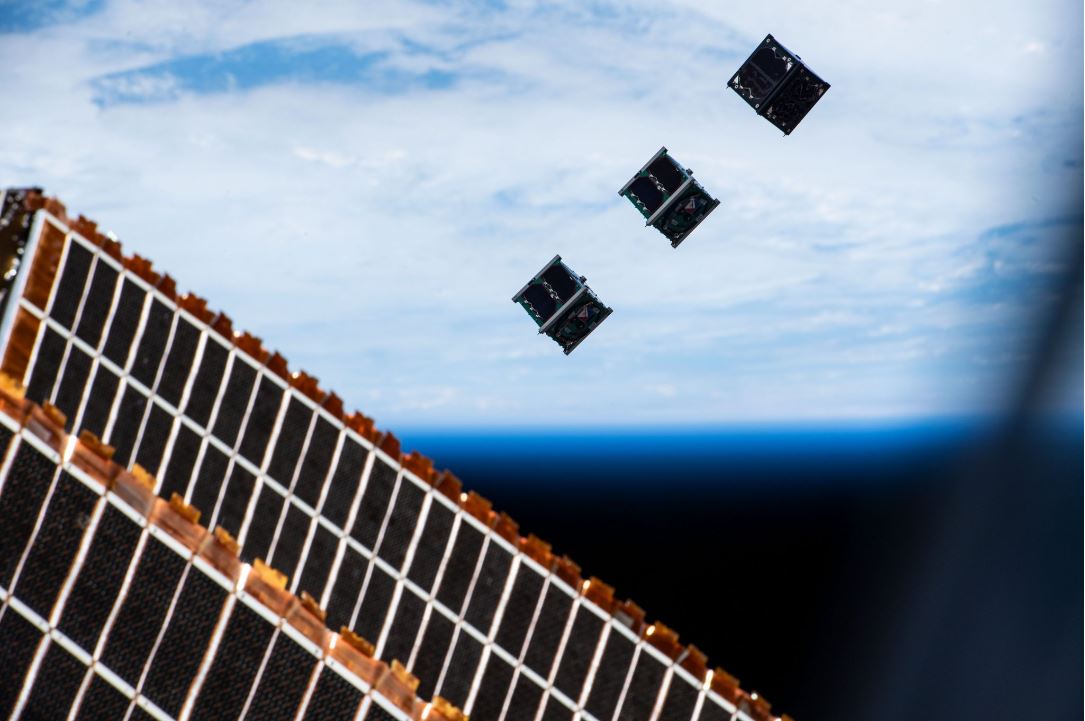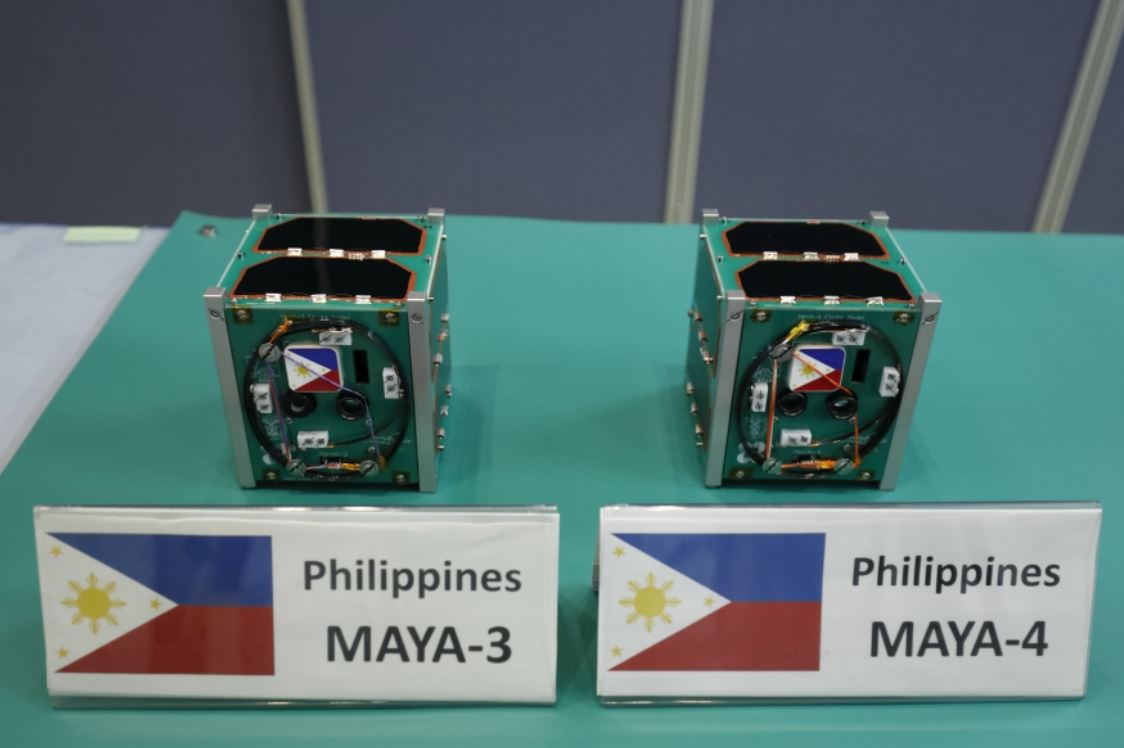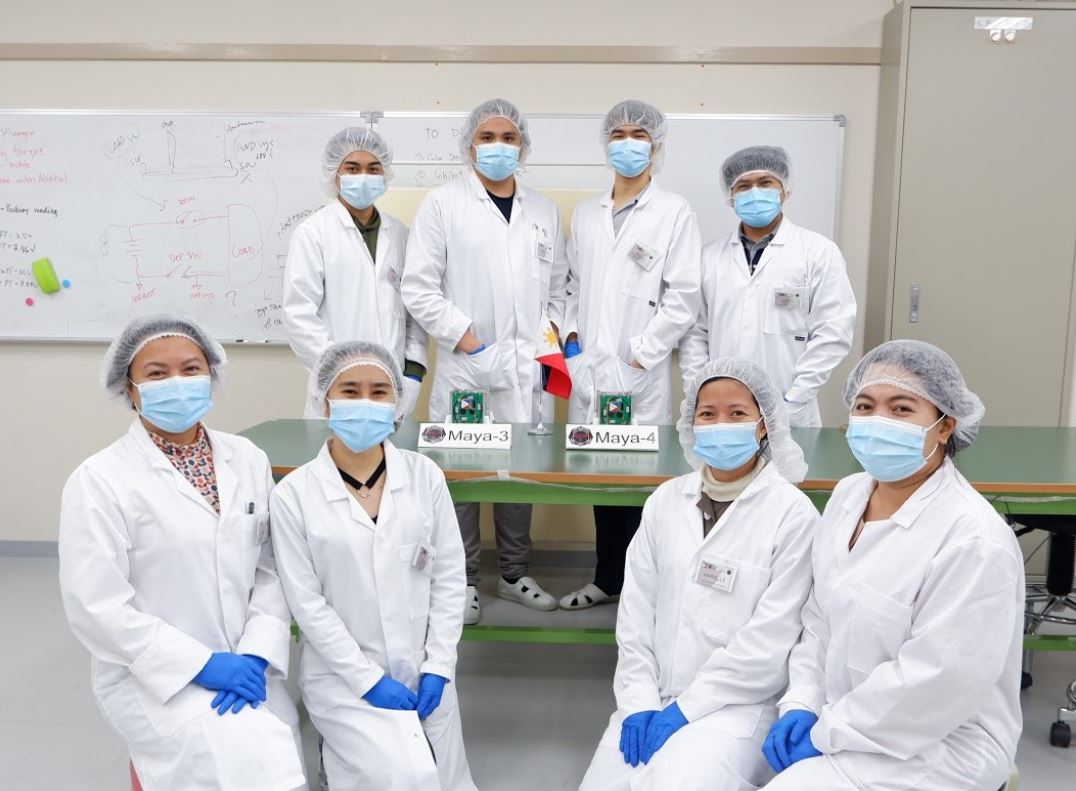
The University of the Philippines’ first cube satellites (CubeSats), Maya-3 and Maya-4, have ended their space mission.
The pioneering satellites designed and developed by the first batch of scholars under the STAMINA4Space Program were decommissioned 1 year after their deployment to the International Space Station and 10 months after deployment into orbit in October 2021.
Maya-3 and Maya-4 re-entered the Earth’s atmosphere on August 4 and 8, 2022, respectively, STAMINA4Space reported on August 9.
Maya-3 and Maya-4 were the first Filipino cube satellites (CubeSats) built in a local university setting, designed and developed by the first batch of scholars under the Space Space Science and Technology Proliferation through University Partnerships project of the STAMINA4Space Program.

“Maya-3 and Maya-4 were pivotal in the development of the local space industry. These CubeSats are experimental and educational platforms, and while all low earth orbiting satellites will eventually fall to earth, what matters more are the lasting intangibles that the project brought – knowledge, skill, partnerships, and confidence that we can do it,” said Dr. Maricor Soriano, program leader of STAMINA4Space Program.
Maya-3 and Maya-4’s bus systems were fashioned after Maya-1’s bus heritage, with enhancements on the antenna board. One of the missions of both satellites is to carry a commercial off-the-shelf APRS-Digipeater Payload Demonstration (APRS-DP mission), which uses packet radio technology to transmit information over amateur radio. The CubeSats were identical except for a near-infrared camera mounted on Maya-4, which made the only difference in their missions.
Both CubeSats were able to transmit APRS beacons to ten countries on different occasions. Different amateur radio operators from 8 countries were also successful in digipeating through the satellites.
“Maya-3 and Maya-4 showed that the country is capable of building satellites locally. We have successfully transferred the knowledge and know-how acquired abroad by virtue of foreign studies and proliferated those lessons locally,” said Engr. Renzo S. Wee, one of the engineers who developed the satellites.
Engr. Renzo was joined by Engr. Gladys Bajaro, Judiel Reyes, Derick Canceran, Marielle Magbanua-Gregorio, Lorilyn Daquioag, Bryan Custodio, and Christy Raterta in the development of the satellites.

Maya-3 and Maya-4’s engineers also looked back to the challenges they faced during the development of the satellites.
“It was a great challenge to be the first to do such a project locally. Being the pioneering batch to have a local project for satellite development was not easy since expectations were high. We had a vague map of where we were going, but we were tasked to navigate it in a local setting. But it became our greatest achievement, we were able to build the satellites and successfully deployed them into orbit,” said Judiel Reyes.
Engr. Gladys Bajaro also recalled the larger lessons she learned from developing the satellites.
“I learned a great deal about the different concepts in nanosatellite development and testing. Properly defining the design & test requirements and habitually revisiting these criteria are important as they will be the foundation when making critical decisions throughout the development phase of a satellite. But aside from that, It also helped me develop trust with my team members and nudge them to meet the project goal,” said Engr. Bajaro.
STeP-UP Project Leader Engr. Paul Jason Co said that the Maya-3&4 engineers are anticipated to become part of the country’s local space industry. He also laid out future plans for the space industry:
“With Maya-3 and Maya-4, we proved that we can build our own cube satellites locally. We can locally develop the necessary expertise for our budding space industry. Now, Maya-5 & Maya-6 are on the way which will be continued by the Philippine Space Agency (PhilSA) through the Advancing Core Competencies and Expertise in Space Studies Nanosat Project (ACCESS).”
The CubeSats were launched to the International Space Station (ISS) on August 29, 2021, aboard the SpaceX Falcon 9 rocket’s Dragon C208. On October 6, 2021, the CubeSats were deployed into orbit via Kibo Laboratory Module, along with Binar-1, developed by Curtin University in Australia.
The next day on October 7, beacons from the CubeSats were immediately received and decoded during their 9:00 AM PhST pass remotely through the Philippine Universities Ground Archiving and Data Reception (PUGAD) station in UP Diliman.
Maya-3 and Maya-4 were built under the STeP-UP project of the STAMINA4Space Program, which is funded by the Department of Science and Technology (DOST) and implemented by the University of the Philippines Diliman (UPD) and the DOST Advanced Science and Technology Institute (DOST-ASTI).
The nanosatellite development track is under the Master of Science (MS) or Master of Engineering (MEng) program of the Electrical and Electronics Engineering Institute of the University of the Philippines Diliman (UPD-EEEI).
It is also implemented in collaboration with the Kyushu Institute of Technology (Kyutech) in Japan and with scholarship support from the Department of Science and Technology’s Science Education Institute (DOST-SEI).
One of STAMINA4Space Program’s thrust is to cultivate the local space industry which can be achieved through building cube satellites locally. The experiences and learnings during the Philippines’ participation in the BIRDS Project which was in partnership with the Kyushu Institute of Technology in Japan led to the development of Maya-3 and Maya-4.
Currently, the second batch of scholars of the STeP-UP Project is developing two more CubeSats, Maya-5 and Maya-6 which are built after the recently decommissioned Maya-2 heritage and are slated to launch in 2023.
Good News Pilipinas is a Lasallian Scholarum Awardee. TELL US your good news story tips by messaging GoodNewsPilipinas.com on Facebook, Twitter, Instagram, or e-mail editor@goodnewspilipinas.com and WATCH Good News Pilipinas TV YouTube & Good News Pilipinas TikTok for more Filipino Pride stories!










